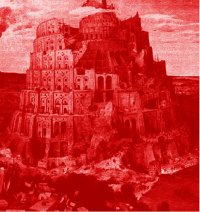Digital library of construction informatics and information technology in civil engineering and construction
Digital library
Paper: w78-1997-443
| Paper title: | Managing dynamic life-cycle-dependent buildingobjects in a distributed computing environment |
| Authors: | Yum K-K, Drogemuller R |
| Summary: | Building and construction business processes involve various stakeholders located indifferent locations over the life cycle stages of buildings. In order to develop anyautomated solutions for improving these processes, there is a need to develop a flexibleframework that can deal with two important issues:(a) common data for sharing and access across networked computers over time;(b) management of data for the protection of rightful access and for the reduction ofinformation overloading.While there had been many attempts in the past to provide "logical" industry informationframeworks for integration, they proved to be difficult for a "fragmented" industry like theconstruction industry to adopt. For any integration framework to be useful for collectiveimplementation, this paper argues that the AEC (Architecture, Engineering andConstruction) business/enterprise views should be captured in an open interoperablearchitecture. The gist of the business/enterprise view point is that users can play variousroles (owner/operator, architects, etc.) at various life cycle stages (briefing, conceptualdesign, detail design, construction, operation, etc.); and through these roles, users canconnect to various building model servers and various software tools. Embedded in thisbusiness model is a simple and yet powerful threaded relationship "users - business rolesand life cycle stages - tools and data". It is powerful because it supports a generic datamanagement regime: users can select various permissible roles in various life cycle stagesto access legitimate tools and data within various building model servers. It is simplebecause it is compatible with today's network operating system login procedures and thepassword protection mechanism of files and folders. As people, end users and developersalike are familiar with the basic paradigm of "data manipulation through software tools".The above two features of the business view reinforce each other for gradual acceptance bythe AEC industry. What is needed is a critical mass from an industry alliance to initiate afeasibility study of the interoperable architecture, its business views and other supportingview points (information views, engineering views and technical views) for a quickdemonstration.This paper also presents some usage scenarios demonstrating how a user logs on as adesigner and connects to a design tool accessing data objects in a building model server. |
| Type: | |
| Year of publication: | 1997 |
| Keywords: | Modeling methodologies and technologies; discipline/phase specific models; interoperablearchitectures, business models, information models. |
| Series: | w78:1997 |
| ISSN: | 2706-6568 |
| Download paper: | /pdfs/w78-1997-443.content.pdf |
| Citation: | Yum K-K, Drogemuller R (1997). Managing dynamic life-cycle-dependent buildingobjects in a distributed computing environment. Drogemuller R (editor); International council for building research studies and documentation. workshop (1997, Cairns) Information technology support for construction process reengineering Proceedings of CIB workshop - w78 “Working commission on information technology in construction” and tg10 “Task group on computer representation of design standards and building codes”, Cairns, Queensland, Australia, July 9th-11th, 1997; ISBN 086-443-636X (ISSN: 2706-6568), http://itc.scix.net/paper/w78-1997-443 |
inspired by SciX, ported by Robert Klinc [2019]





